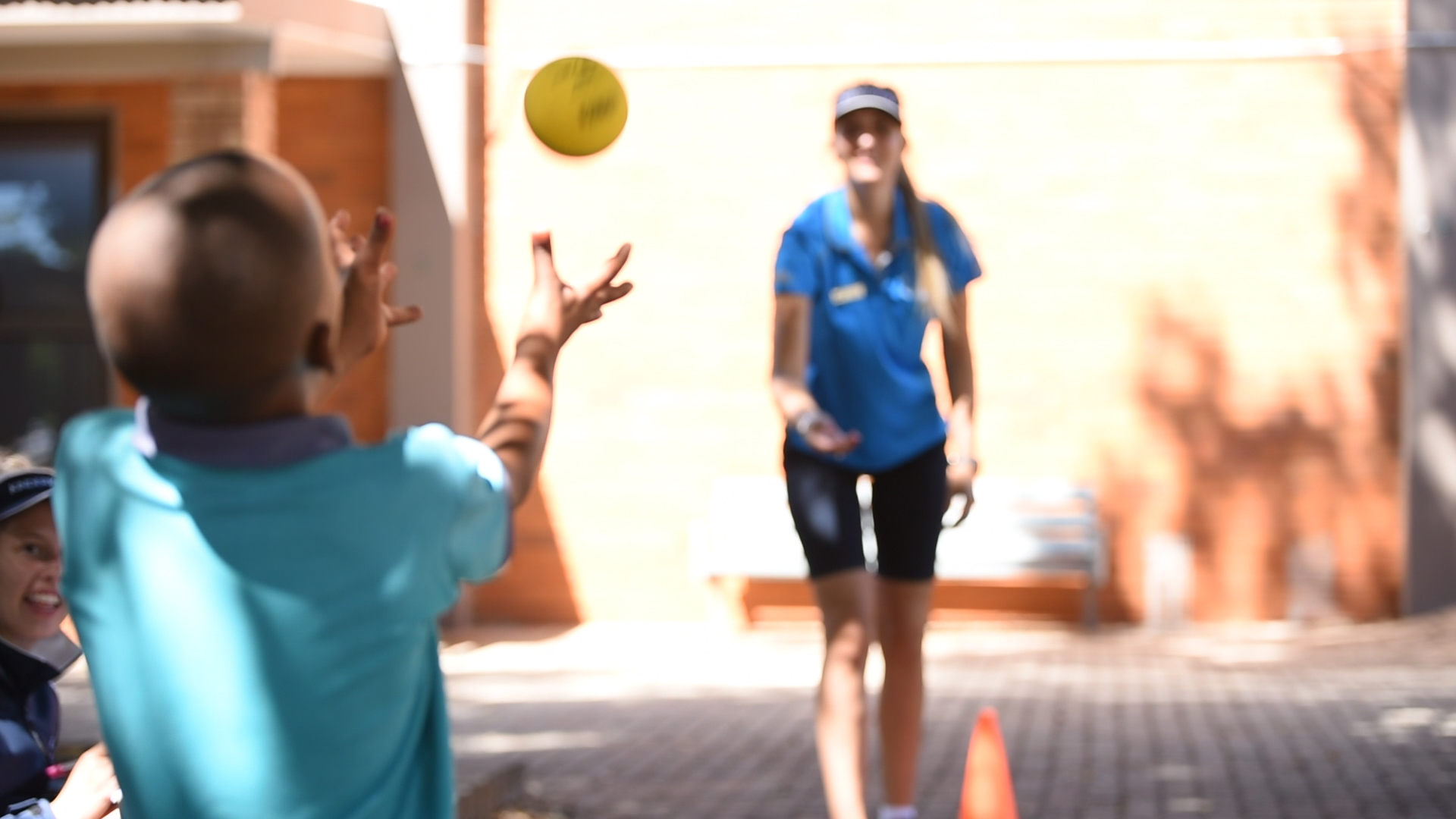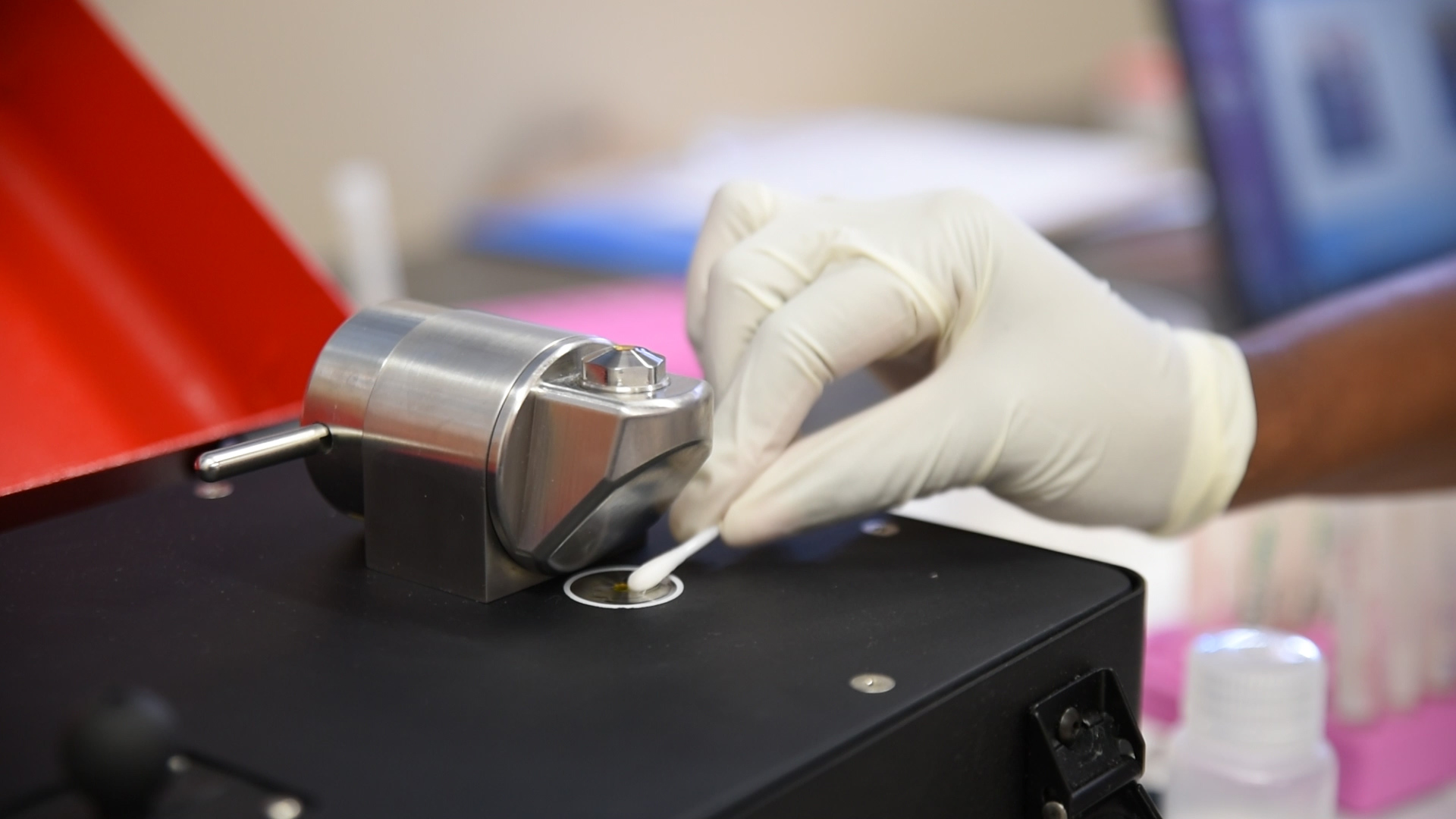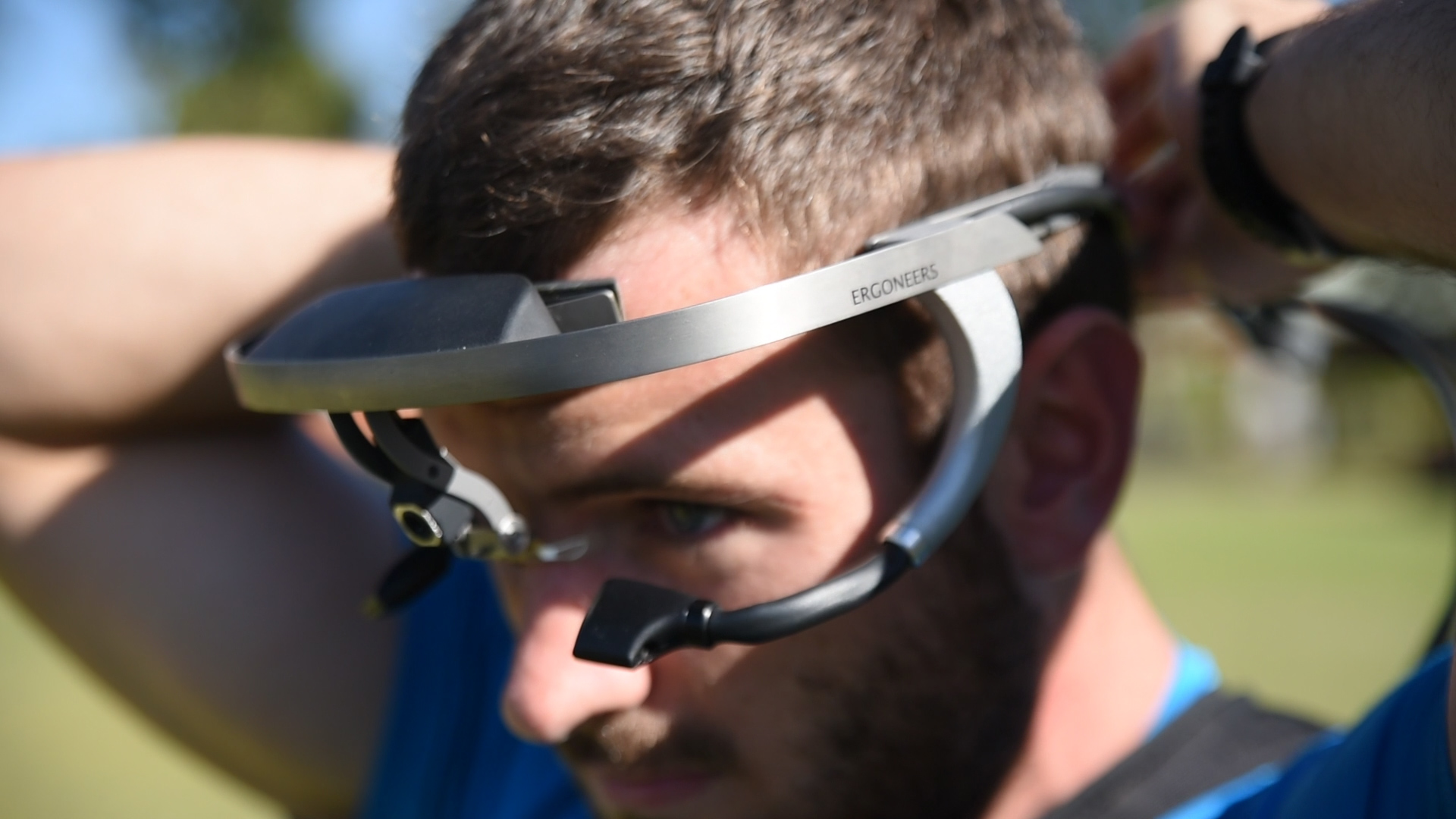



PhASRec Video Project Playlist here for viewing.
The effect of a sleep hygiene period on match performance, physical, physiological and psychological states of university-level soccer players (sleep study)
Soccer has increased immensely at a collegiate level as seen with increased training and competitive sessions. This can result in in sleep deprivation due to various reasons, resulting in performance decrements. Sleep is vital for optimal physical, physiological and psychological recovery for enhancing sport performance. Due to athletes often undergoing sleep deprivation, researchers have established various sleep hygiene recommendations to implement for improving sleep quality. Unfortunately, limited research is available on the effectiveness of implementing a sleep hygiene period (SHP) on various physical, physiological and psychological measures, as well as on soccer match demands and performance indicators. Therefore, this study will examine the effectiveness of implementing a SHP on various aspects vital for performance. This will be beneficial for various athletes and coaching staff to implement during their competitive season, as well as to expand on the current research available.
Patient experiences with anxiety and depression after total hip or knee arthroplasty: benefits of mental health assessments as an integral part of post-operative orthopaedic care
Total hip and knee joint replacements (THR/TKR) are common surgeries, due to an increasing prevalence of osteoarthritis and falls-related fractures. Anecdotally, patients have reported more anxiety and depression after trauma-related surgeries compared to elective surgery, but there is little literature comparing post-operative psychological outcomes and recovery between elective and trauma patients in public and private hospital systems, and in metropolitan compared to regional centres. Participants will be recruited from metropolitan and regional areas, must be 18 years or older and must have undergone a total hip or knee replacement in a public or private hospital. The project will investigate patient experiences of anxiety and depression pre- and post-surgery to identify common themes that may translate to improved models of care. Outcome measures include demographic data, an experiential survey, the Hospital Anxiety and Depression Scale, SF-12 QOL and VAS 0-10 Pain Scale. Outcome measures will be recorded 10-days, 6-weeks, 6-months and 12-months post-surgery.
The University Teaching in Africa (RUTA) research project within PhASRec
How do we improve the educational experiences of future Biokineticist, Kinderkineticist, Sport and Coaching Scientist and Recreation specialists? In RUTA (a research project within PhASRec), we engage in education-based action (real-world and applied) research employing quantitative and/or qualitative methodologies. In this type of research, you will either work with health care professionals, coaches, students, patients and/or athletes. The following are the educational focus areas:
- Identifying the status of and/or developing professionals possessing the skillsets and self-confidence to deliver rehabilitative, sport-specific and/or recreational experiences.
- Identifying the status of and/or developing professionals possessing the skillsets and self-confidence to be entrepreneurs, good communicators, leader, societal changer, innovators, critical thinkers, and/or team members who can work with others.
- Exploring how the current teaching modalities used within Human Movement Science develops students’ 21st century attributes, introspection and/or certain literacy skills.
- Exploring lecturers’ educational philosophies, teaching modalities and/or experiences of higher education whilst aiming to achieve the Department of Higher Education and North-West University’s teaching and learning strategic outcomes.
- Exploring alternative educational experiences focused on developing students’ 21st century attributes, introspection and/or certain literacy skills.
Retirement Adjustment and Leisure Study
This longitudinal research project within Recreation Sciences focuses on retirement adjustment and the changes that occur in terms of leisure, physical activity, and functional and cognitive ability. The project will also investigate the role that leisure plays during the different phases of retirement adjustment. The overarching research questions of the project are: 1) How do individuals experience leisure and retirement during different stages of retirement? 2) What changes occur in terms of individuals’ leisure, as well as physical, cognitive and psychological health during the different stages of retirement? and 3) Do individuals’ leisure play a role in their psychological, physiological and cognitive wellness and adjustment to retirement? Phase 1 of the project will make use of qualitative research to inform our understanding of retirement. Phase 2 will consist of qualitative and quantitative research methods.
Rehabilitation and Human-performance Analytics using Biomechanics (ReHAB)
The ReHAB project is housed within the Physical Activity, Sport, and Recreation (PhASRec) Research Focus Area at the North-West University. Biomechanics plays a central role in both rehabilitation and performance. The ReHAB project aims to apply the principles of biomechanics that focus on injury prevention, post-injury rehabilitation, sports biomechanics, and performance enhancement. Themes within the ReHAB ongoing project include:
- Application of kinetic and kinematic profiling to better evaluate return-to-sport outcomes in laboratory and clinical settings in athletes with ACLR.
- Cardiometabolic and force-velocity-power profiles of male soccer players based on the critical speed concept.
- Effects of a customized PowerBand intervention on strength, agility, and sprint ability in field-based athletes.
- The effects of shuttle-based high-intensity interval training and post-activation performance enhancement on physiological and neuromuscular outcomes in team-sport athletes.
- The effects of schoolbag loading on posture and weight shifting in children.
- Development of an electronic platform (i.e. knee brace) to quantify human knee function.
Currently the capacity of upcoming research projects would have to reside within these project domains. However, suitable research topics from potential PhD and Masters candidates that fall within the scope of the projects mentioned will be considered.
The impact of changes in the nocturnal heart rate variability indices of Ultimate Frisbee players throughout a tournament on match performances
Athletes make use of different sleep strategies, especially during completion periods. However, very few studies have thus far investigated the possible effects of sleep strategies and especially indicators of sleep quality and duration on match performance. The possible link between sleep quality and match performance highlights the importance of adopting an evidence-based approach to monitor athletes’ sleeping habits during competition. One of the most promising methods to measure the quality and influence of athletes’ sleeping habits during competition periods, is the analysis of nocturnal heart rate variability (HRV). This non-invasive, cost-effective and accurate approach has a significant advantage over other methods as it does not cause disturbances in sleeping patterns. Despite the benefits of measuring athletes’ nocturnal HRV, only a few studies have investigated the changes in athletes’ nocturnal HRV during a competitive period. The possible influence of changes in athletes’ nocturnal HRV on match performances during a competition period, is also not an area not has received a lot of attention. Ultimate Frisbee, which is one of the fastest-growing sports globally, and is normally played over 3 days with 5-6 matches being completed, serves as an ideal sport to measure nocturnal HRV and the possible influence of last-mentioned changes on match performances.
The Netball Study
Netball is an increasingly popular sport, practised by amateurs and professionals, both genders across many age groups. The prevalence of specific lower extremity injuries is common and increasing. Conditioning, monitoring and fitness protocols currently applied in netball to promote performance and decrease the risk of injuries are in question. Research on the above mentioned are limited. The aim of this study is to investigate the prevalence of selected upper and lower extremity netball injuries, in relation to specific netball monitoring, conditioning, training and fitness protocols within young female netball players, as well as the effect of an exercise intervention on these variables. This study is a randomised controlled trial. Understanding the prevalence as well as risks and effects of injuries in netball will assist in decreasing the risks for obtaining injuries, improve conditioning protocols, lower reoccurrence of injuries and promote individual and team performance.
Investigating the relationship between physiological and physical loads, absolute and relative speeds on team match performance in semi-professional rugby union players
This specific GPS-based project was launched last year, and the data has been already collected. The project has exciting potential to investigate match performance by using the latest measures in tracking match load technology. The project has enough room to either focus on recovery through physical (Catapult’s player load) or physiological (HRV) attributes. Recovery is one of the most key factors in the modern sport era determining a team’s performance. However, in the high-pressure environments professional teams function in, non-invasive and quick interpretation of match loads is crucial to data analysts and sport scientists. Most teams used relative thresholds available in research and thus does not account for individuals that are different from the average norms. Absolute thresholds are therefore a better way to account for everyone in a team with their respective differences and therefore would be advantageous to any teams' performances. This study will aim to correct this oversight.
Force signatures project
Injuries are a financial burden to teams. The goal for sports teams is to ensure an optimized strength and conditioning regime to increase performance and prevent injuries. Clinical movement screens are used to identify at risk athletes. The countermovement jump (CMJ) is a reliable movement screen to assign athlete risk. On the force-time curve, three phases during the CMJ are identified creating predictable force-signatures for the athlete in a specific sport. Discrepancies in the expected force output “signature” of an athlete, means increased injury risk. We will aim to include as many university sporting codes as possible. Force-signatures of athletes will be evaluated using the CMJ for the whole season of their sporting code. Injuries will be documented along the course of the season, while still regularly monitoring athletes. Project directions include comparing force signatures over the season, differences in sports, positional differences and previous injury effects.
Dr Mariaan van Aswegen in collaboration with Mr JPJ Stofberg
Effect of different exercise interventions on cardiovascular markers of middle-aged individuals
Sufficient and regular exercise is known to provide health benefits to individuals. During middle age, a person’s quality of life deteriorates and the risk for cardiovascular disease increases. Therefore, this study aims to determine the effect of different exercise interventions on functional- and physical performance and cardiorespiratory markers of middle-aged people to ensure an improved quality of life. The study will follow an intervention design and include persons older than 45 years. and various cardiovascular markers will be investigated in response to different exercise interventions.
Prof Hanlie Moss
Dr T Veldsman
Exercise effects on the physiological and physical variables of post-Covid-19 persons
The short and long-term effects of Covid-19 in persons are becoming more evident with the increase of available information. Most of the detrimental health effects of Covid-19 are based on persons that were hospitalised. This study aims to determine the effects of exercise interventions on the physiological and physical health markers in persons post-Covid-19. The study will follow a pre-post exercise intervention design and include variables related to physiological markers and functional performance. Due to the nature of the study, only students enrolled as full-time post-graduate students will be considered.
Developing a motor PERFormance and physical FITness tool for low resourced communities (PERF-FIT)
Children continue to learn various motor performance skills such as hopping, running, throwing, jumping and balance that will improve their motor development. But for some with motor deficits, these skills take longer to develop, if at all. Therefore, this project is a quantitative study, with the research design focusing on a cross sectional, descriptive and an analytical approach. The main aim of the current project is to contribute to the establishing of the validity of the PERF-FIT by comparing it to standardized tests. Known group validity is established through a priori testing of children across different ages and genders. These findings, together with the lack of findings from a South African context, lend to the importance of designing a tool that can be implemented in South African communities in order to identify South African norm values. The PERF-FIT test battery will be developed to provide a set of valid, reliable, feasible, and cheap field based motor performance items for the assessment of health‐related physical fitness in children in low resourced communities. By selecting a group of children between the ages of 6 and 12 years old residing in low-resourced areas we intend to test the proposed tool on validity and reliability. In this known-group validity research study, children will be expected to perform the following tasks:
- Bouncing and catching a ball
- Throwing and catching a ball
- Jumping
- Hopping on one leg
- Balancing tasks while standing still
- Balancing tasks while moving
Based on the study, we expect to compare standardized measures for motor performance and fitness levels for children between the ages of 6 years old to 12 years old that will be applied as an outcome measure to screen and identify early motor deficits or delays in children in low resourced areas.
Exercise oncology study
Benefits of physical activity include, but are not limited to: improved physical functioning, improved mood states, lower depression and anxiety and even decreased nausea.
In first world countries such as Europe, Australia and America have dedicated exercise oncology centers. Exercise oncology forms part of their treatment plan, whereas in South Africa, there is a need to create an active link between the treating oncologist and the biokineticist, to allow easier access to exercise groups or exercise treatment in a safe and controlled exercise facility.
